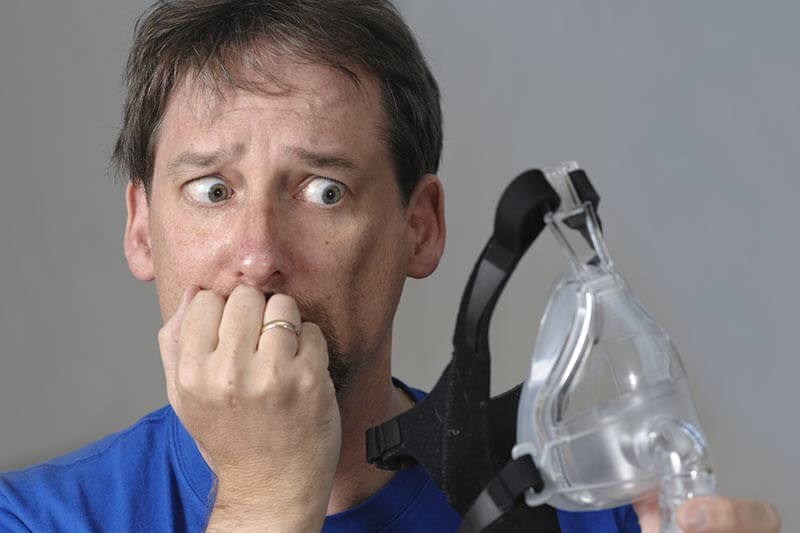If you’ve just been prescribed with CPAP therapy for your sleep apnea, there’s a whole new world out there to explore and you probably don’t even know where to begin. Having a good CPAP machine and tubing is extremely important, but we dare say that the success of this entire endeavor hinges on choosing the optimal CPAP mask for your face structure and sleeping habits/positions.

Types Of CPAP Masks
If you’ve never slept with something stuck to your face, it’s safe to say it’ll take some time for you to get used to wearing a CPAP mask. Doctors usually compare CPAP masks to new shoes. Every new pair of shoes will chafe and feel a bit uncomfortable in the beginning. CPAP masks are exactly the same.
However, you can make the entire process much easier by picking the right type of CPAP mask for you. Currently, you can choose from:
- Nasal masks – These masks are designed to cover the area around your nose and usually stretch between your upper lip and the bridge of your nose.
- Nasal pillow masks – This is the most minimal type of CPAP masks since it only covers the area under your nose. This interface is also called “nasal prongs.”
- Full-face mask – This interface is designed to cover both airways, meaning your mouth and nose. It is usually recommended to mouth breathers in order to prevent the so-called “mouth leakage.”
Apart from these main types, you can also opt for a full-face CPAP mask that covers your eyes. Not many patients choose this option for apparent reasons. Namely, it will prevent you from wearing glasses and reading or watching TV before bed.
How Do CPAP Masks Work?
CPAP machines basically use pressurized air as a splint that keeps your airways open while you sleep. The mask is the end-part of the device that connects to your face and ensures an uninterrupted air delivery. Basically, as long as your mask holds a tight seal and the air pressure coming through the tube remains constant, your CPAP gear will do its job effectively.
This brings us to the main potential problem users experience with CPAP masks. If your mask leaks air for whatever reason, the effectiveness of your CPAP therapy will be greatly diminished, so it’s up to you and your sleep technologist to identify the optimal type of mask for your specific needs. You will have to be mindful of the amount of face coverage in order to prevent claustrophobia. Additionally, excessive facial hair will also limit your choices since beards and mustaches can interfere with the seal between your face and the mask.
Choosing The Best CPAP Mask For You
Here is some useful information about the most common types of CPAP masks that can help you make the best choice for your needs and preferences.
Nasal pillows (seal around the nostril base)
This type is preferred by around 28% of all users since it adds the least amount of material and weight on your face. It’s the best option if you have a lot of facial hair, like to read or watch TV before bed or get claustrophobic easily.
Nasal masks (seal around the nose)
Preferred by around 45% of all users, this interface is optimal for patients who breathe through their nose and like to read or watch TV before bed. It is also recommended for active sleepers and users who like to experiment with different pressure settings.
Full-face masks (seal around the nose and mouth)
Full-face masks are preferred by around 27% of users and they are excellent for mouth breeders and individuals suffering from allergies and congestion.